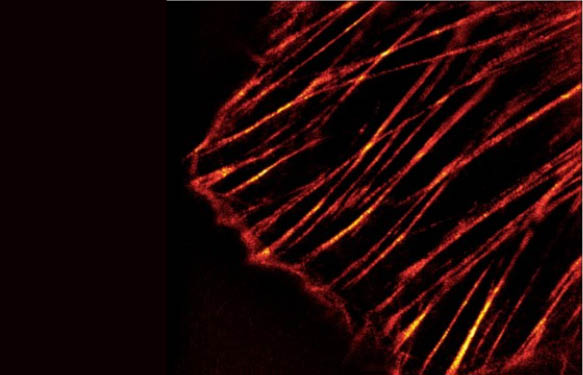Cytoskeleton modeling molecules are relevant when trying to improve one’s understanding of cytoskeletal molecular modeling and associated mechanisms. Together with actin binding proteins, tubulin-based assays, small GTPase activation assays etc… these reagents are called small molecules, but they remain extremely potent in in vitro cell-based assays. Here, let’s take look at a selection of the most popular chemicals modifying actin or microtubule polymerization.
#1- Docetaxel
An antimitotic chemotherapeutic acting on the centrosome of the mitotic spindle via reversible high-affinity binding to microtubules. Docetaxel induces apoptosis in a variety of cancer cell lines.
#2- Epothilone B
A tubulin polymerization promoter inducing G2-M cell cycle arrest stabilizing microtubules and displaying potent cytotoxic activity in a variety of cell lines and mouse models.
#3- Latrunculins
Potent actin polymerization inhibitor disrupting microfilament organization.
#4- Nocodazole
A microtubule polymerization inhibitor used to induce mitotic arrest and cell synchronization. Nocodazol inhibits a number of cancer-related kinases including ABL, c-Kit, BRAF, MEK1, MEK2, and MET.
#5- Taxol
A chemotherapeutic agent for the treatment of breast, non-small cell lung and ovarian cancer. Taxol promotes tubulin polymerization, stabilizes microtubules in vitro and in vivo resulting in arrest of cells in the G2 and M phase of the cell cycle.
Many other well-qualified cytoskeleton modulators (Ansamitocin P-3, Cytochalasins, Colchicine, Vinblastine sulfate…) are available from various sources (my preference going to Focus Biomolecules for quality and price advantages!). Nevertheless, the 5 described here are among those most spontaneously cited by researchers.
What about you? Which ones would you recommend to study cytoskeleton dynamics?



